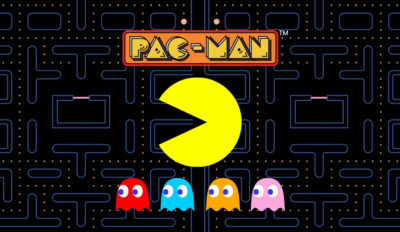Outsourcing vs Team Augmentation | A Complete Guide

Given how complex and time-consuming software development is, the tech market offers businesses a vast range of services to cover their process and help develop projects with ease and satisfaction. Even though there are over 4 cooperation models in 2022, outsourcing and team augmentation are still two favourite options for most organisations.
Since there is a constant need for developers, every business wants to make the project implementation faster and more effective. This is why outsourcing and team augmentation are extremely important for any IT business. Even though they share similarities, these cooperation models have differences that make one of them suitable for specific projects.
This guide was created to help you explore staff augmentation and outsourcing definitions, their similarities, their differences, and what suits you best. Let’s get to the point.
Why Does Your Business Need Outsourcing?
With the extreme development of new technologies and global digitalisation, the dev shortage is growing at an immense speed. For instance, the Solving the UK Skills Shortage shows that more than 70% of UK technology companies are facing an IT skills shortage. As a result, creating an in-house team can become a challenging task for most companies to find specialists for their projects, or either this takes too much time and resources.
This is how outsourcing can solve this problem. It helps with:
- cost reduction;
- quickly hire qualified specialists;
- do not waste time and money on recruitment;
- and much more.
What is IT Outsourcing?
Outsourcing is the cooperation model which involves the assignment of specific tasks (like software development) to a third-party company that is responsible for providing employees and resources needed for the task. In the IT industry, the goal of cooperation depends on the needs of the specific company. The company that hires an outsource team can delegate either all IT operations or just small tasks like integration of specific technologies or wallets.
What is Project Outsourcing?
Project outsourcing is a type of outsourcing cooperation model where the client outsources the entire IT project to an external technology partner. As a result, the outsourcing company is responsible for hiring, managing, and paying employees. In addition, this company is in charge of meeting deadlines and delivering quality of the delivered product.
What is Staff Augmentation?
Staff Augmentation, also known as an augmented team, is an out-staff cooperation model that involves extending the client team with individual specialists or an entire team. Specialists hired within this model join the team to fulfill the skill gap and are usually responsible for those tasks that the exciting team isn’t capable of. However, in some cases, a client’s team can also hire a group of developers or designers to speed up the software development process and reduce the costs of hiring specialists.
Why Does Your Business Need Team Augmentation?
Team augmentation is the best option for any business that runs a short-term project or requires unique skills for specific tasks. This is because extending the team with team augmentation can benefit the business in many ways. For example, companies can save lots of money and resources they would probably spend without this model.
Project Outsourcing vs Staff Augmentation — Pros & Cons
Pros of Outsourcing
- Cost-reduction — this cooperation model is known for significant savings because you don’t need to provide an office or equipment for the team;
- More opportunities — Using this model, you have many options in choosing whether you want to hire the company from your country or find the most cost-effective options. You can also find a company specialising in specific tasks or industries for top-notch results;
- Time-saving — When you outsource the whole project, you get more time to focus on valuable tasks like business growth and development, marketing strategies, and creating connections in the industry;
- Less stress and responsibility — Using an outsourcing model, the team provider is responsible for all tasks like hiring and managing. In addition, the provider is also in charge of deadlines, issues arising, terms of agreement with employees, and the final quality of the delivered product. That is why you can rest assured of less stress and responsibility.
Cons of Outsourcing
- Less influence on project work — outsourcing cooperation model also means that the client delegates the entire direct project management. That is why the final result can differ from your expectations;
- Communication problems — hiring an outsourced team is associated with communication issues that may arise in the process. That is why it is worth choosing an outsourced team that is known for good communication skills and good English level as well;
- Less knowledge about your company — employees working on your project through the outsourcing cooperation model won’t be able to fully explore your team goals, resulting in less engagement and poor quality of the final product.
Pros of Team Augmentation
- Money and time savings — just like with the outsourcing model, when you hire an experienced augmentation team, like Deazy, you can save lots of money and time without recruiting or looking for new specialists;
- More engagement — hiring team augmentation and adding them to your team can give you a competitive advantage. This is because these specialists will show more engagement than outsourced teams, knowing details about your company;
- Risk management — in case you don’t like specialists or something happens, you can ask the provider to switch engineers with no issues. While the provider is responsible for the quality of work of specialists, you can easily manage risks before it is too late.
Cons of Team Augmentation
- More responsibility — when you use team augmentation, you will be responsible for what conditions you offer to the hired team, which aids complexity;
- More tricky to manage — team augmentation also involves managing the entire team, including new specialists joining your project. This is why it is best for you also to hire a project manager who will take the whole work and let you focus on more valuable things.
Final Thoughts
Since most businesses go online now, the development world offers various options for any task and goal. However, outsourcing and team augmentation are still the two most popular ones that gained attention from organisations during the last few years. Knowing the difference between both models’ pros and cons can help you find the best option for you.
Alexia is the author at Research Snipers covering all technology news including Google, Apple, Android, Xiaomi, Huawei, Samsung News, and More.











